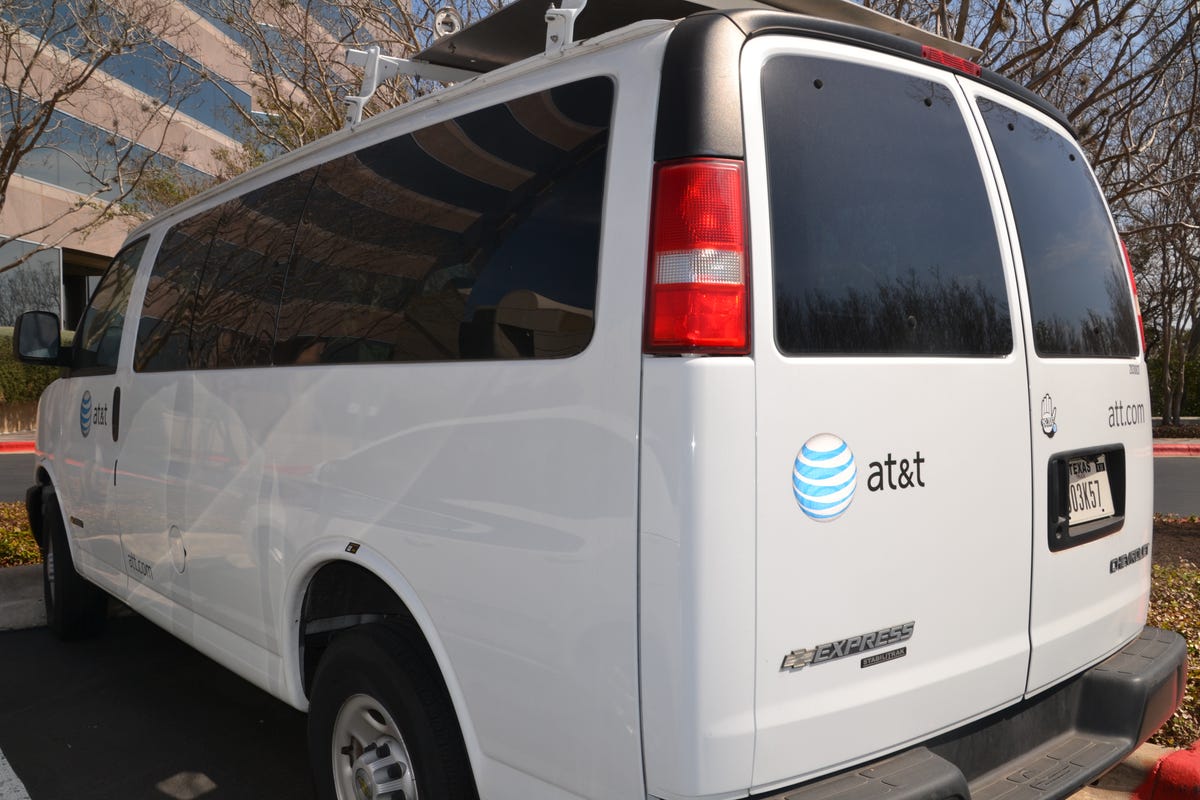
Marguerite Reardon/CNET
AT&T’s customer growth continued to surge — particularly with a rebound in smartphones — even as it missed Wall Street’s earnings and sales expectations for the second quarter.
The Dallas telecommunications giant posted a second-quarter profit of$3.55 billion, or 68 cents a share, compared with a year-ago profit of $3.8 billion, or 71 cents a share.
On an adjusted basis, the company earned 62 cents a share. Revenue, meanwhile, rose 1.6 percent to $32.6 billion. The results fell below analysts’ average estimate of per-share earnings of 63 cents a share on revenue of $33.2 billion, according to Thomson Reuters. Shares fell 1 percent to $35.63 in after-hours trading.
AT&T, like its peers in the industry, is going through a change in its core wireless business, with customers increasingly opting out of service contracts, opting to either bring their own device or pay for them on a monthly installment basis. In exchange, the carrier no longer has to cover the subsidy that artificially turns a $650 iPhone into a $200 device. It’s change brought about by T-Mobile, but one that AT&T has now fully embraced.
“We’ve been successful in repositioning the business model, and the shift has been happening at breakneck speed,” AT&T Mobility CEO Ralph de la Vega said on its conference call on Wednesday.
AT&T said it added more than 1 million so-called postpaid customers, or customers who sign a long-term contract or pay toward the end of the month, considered the most lucrative base of customers. In total, the company added a net 634,000 customers, hurt by a loss of 405,000 prepaid customers, partly a result of the reduction of customers from the recently acquired Cricket prepaid brand.
Related stories
- AT&T tap LG G3, G Watch with July 11 debut
- AT&T defends benefits of proposed DirecTV merger
- AT&T: Amazon Fire Phone will get ‘classic hero treatment’
- AT&T customers can now bring tablets to prepaid GoPhone plan
The company’s postpaid additions include 707,000 new smartphone customers, while it added a net 366,000 new postpaid tablet customers. While AT&T added more overall customers in the first quarter, much of it was driven by connected devices and tablets, which generate lower revenue.
The result come a day after Verizon posted strong profits in the second quarter, alongside adding 1.4 million net new customers thanks largely to the strength in its tablet business.
AT&T, like its peers, offer discounts on wireless service to customers who bring their own devices, pay for their own devices on a monthly basis, or buy their own device outright. The move, spearheaded by its Next program, has led to renewed interest by consumers, but it has also resulted in decreased service revenue from the lower fees. AT&T said the move results in more loyal customers and better long-term value, as it no longer has to pay for the subsidy on a contract device.
De la Vega argued that the move to no-contract plans has longer term benefits with customers who on average stay 18 months longer until its Next plan. The company also said its postpaid customer turnover rate was 0.86 percent, below Verizon’s rate.
“Retaining our smartphone base is the basis for growth,” he said.
AT&T said 44 percent of its postpaid smartphone base is on a no-device-subsidy data share plan.
The success comes even as Verizon’s customers continue to opt for contracts. Verizon Chief Financial Officer Fran Shammo said on Tuesday that roughly 18 percent of its customers have signed up for its no-contract program, Edge, below the 30 percent he had previously expected.
At the same time, an increasing chunk of AT&T’s revenue and profits are coming from areas outside of its traditional phone service, with tablets and other connected devices, such as cars or dog collars, showing growth. De la Vega touted higher revenue from the company’s Digital Life home security and automation business, as well as a good start to its connected business.
On the wireline side, AT&T added 488,000 net new U-verse Internet customers and 190,000 net new U-Verse TV customers. The company has agreed to buy DirecTV to bolster its reach for television programing. Chief Financial Officer John Stephens said the deal continues to proceed, having gotten approval on the state level with no conditions.
Looking ahead, AT&T still expects to post revenue growth of 5 percent and adjusted earnings-per-share growth at the low end of the mid-single digit range.
Updated at 2:51 pm PT: To include additional background and executive comments.



